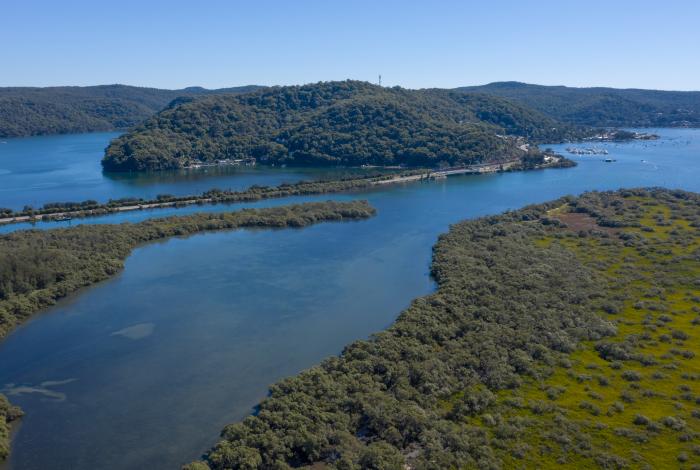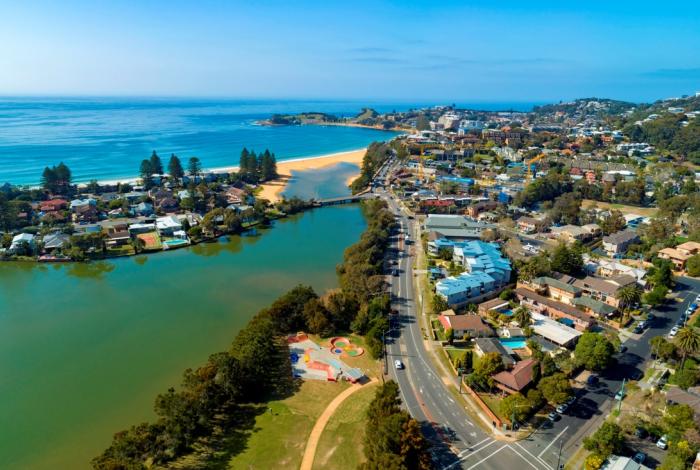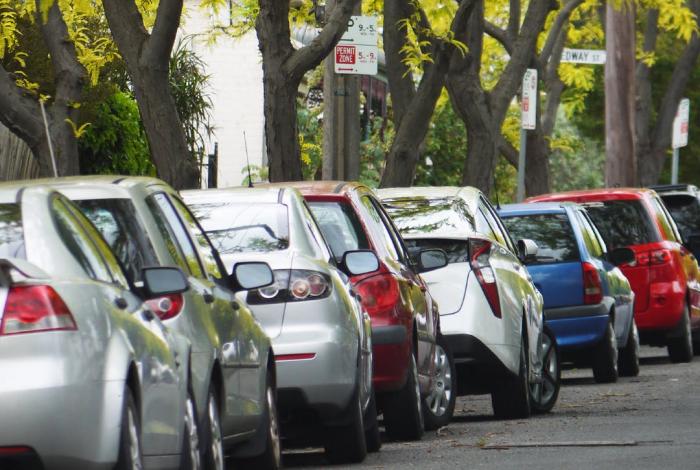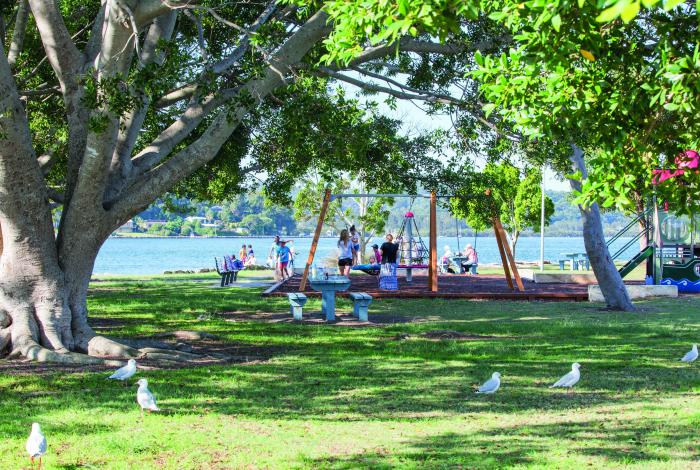Climate Action Planning
Council has worked with the community to better understand how we can respond to stainability and climate change at a local level, and as a region to assist in the development of a whole-of-community Sustainability and Climate Action Plan (SCAP).
The Sustainability and Climate Action Plan includes 27 Actions within five themes, relating to natural systems, water and energy efficiency, community empowerment, waste reduction and improved strategic planning.
The actions have been developed to include initiatives that are currently underway and those that will be started over the next three years.
Through the implementation of the actions within the Plan the Central Coast Council aims to reduce its environmental footprint and mitigate the effects of a changing climate, becoming a Net Zero Emissions Council.
A review of the success of this Plan will occur in 2025. An update of Council’s Climate Change Policy 2019 will occur in the 22/23 financial year. This will include the introduction of emissions targets.
Involving the community
Over the past three years Council has asked the community, for their perspectives on environmental sustainability and climate change.
- 2019 - Sustainability survey via Your Voice Our Coast;
- 2019 – Working group of community members was established to guide the development of the SCAP;
- 2020 – Face to face and online consultation completed as part of Councils Climate Change Policy;
- 2020 – Consultation for the Climate Action Plan completed online and partially face to face; and
- 2020 – 3860 responses received to a public survey and 734 student submissions.
Learn about impacts for your local area
This Online Climate Action Planning (CAP) mapping tool allows you to search for any property address and understand the climate impacts and vulnerabilities affecting your local area, e.g. flooding, bushfire, coastal hazards, threatened ecological communities etc.
Emissions Profile
Document Library
Climate Action Resources
Your Climate Action Checklist
Timeline
Frequently asked questions
What are the benefits of climate action?
Taking action on climate change on the Central Coast has the potential to:
- Strengthen our community’s ability through education and awareness to be more resilient to climate-related hazards and natural disasters
- Help natural areas and ecosystems cope with climate-related hazards and natural disasters
- Reduce the region’s greenhouse gas emissions
- Lower Council’s long-term costs by managing climate-related impacts on assets such as roads, drainage, water, sewer and community facilities
- Improve the wellbeing of our community
- Lead energy efficiency and energy security initiatives as a region
- Develop new industries
- Identify climate change measures into policies, strategies and planning
What is the purpose of place-based climate action planning?
Climate actions will be developed using Council’s 17 localised planning areas.
Developing localised actions in partnership with residents and businesses within each of the planning areas will strengthen the community’s capacity to tackle local climatic impacts and develop the most appropriate climate actions for their local area.
You can find an overview of climatic impacts for your planning area on our interactive map.
How will actions be implemented?
The Central Coast Climate Action Plan will set out priority actions, responsibilities and agreed timeframes. Delivering these actions will be a shared responsibility between Council, community, and business.
Why do we need to plan for climate action at the local level rather than state or federal?
Climate impacts are felt at the local level and affect the livelihood of local communities. Local Government plays a pivotal role in preparing relevant adaptation and mitigation policies, strategies and planning that take full account of local conditions, resource availability and community capacity to change and adapt.
What is climate change?
Climate change refers to any change in climate over time, whether due to natural variability or as a result of human activity. ‘Climate’ is the set of averages, variations and extremes of weather in a region over long periods of time. Thirty years or more—long enough to sample a full range of weather—is the usual period for estimating average climate (Australian Academy of Science, 2010). Climate change will exacerbate natural variability, making it more difficult to manage our landscapes and ecosystems and the human activities that depend on them.
What are greenhouse gases, and how do they contribute to climate change?
The 'greenhouse effect' is the warming of climate that results when the atmosphere traps heat radiating from Earth toward space. The gases that contribute to the greenhouse effect include water vapour, carbon dioxide (CO2), methane, nitrous oxides, and chlorofluorocarbons (CFCs).
For more information, you can also watch this video 'Greenhouse gases are a bit like a doona' produced by Australia's leading climate change organisation, Climate Council.
What are some of the identified impacts of climate change for the Central Coast?
- Urban Heat - Average temperatures are projected to increase with climate change leading to greater incidence and severity of heatwaves.
- Rainfall and flooding - There is considerable uncertainty in the magnitude and direction of average rainfall projections, but there is reasonable certainty that extreme rainfall events will increase in frequency and intensity. However overall rainfall will decrease in spring and winter.
- Bushfire - Fire risk is expected to increase slightly in the region due to increased projected temperatures and potential decreases in rainfall (noting that rainfall projections are mixed).
- Sea Level Rise - Considering the coastal nature and topography of the region, sea level rise is perhaps one of the more significant impacts associated with climate change.
- Coastal hazards / storms and associated impacts - The number of extra-tropical cyclones affecting Eastern Australia, including deep low-pressure systems in the Southern Ocean and East Coast Lows, is projected to decline overall. However, there are suggestions that intense frontal systems affecting south-eastern Australia during the summer may increase.
The Adapt NSW website provides an overview of the climate impacts across NSW and includes information to help communities understand and adapt. It is an excellent resource for climate change information, including some of the key challenges facing the Central Coast. Information includes:
- Expected increase in temperature
- A climate change snapshot
- Forest Fire Danger Index (FFDI)
- Regional maps
- Climate projections
We acknowledge interpreting climate projections can be challenging due to the complexities of our climate system and we encourage the community to attend a community workshop in their local area to learn more.
What is climate change adaptation?
Adaptation is the process of building our capacity to deal with the changing circumstances associated with climate change that include understanding the risks and vulnerabilities and improving our capabilities to cope with these impacts (e.g. storms, flooding, sea level rise, bushfires and heatwaves).
What is climate change mitigation?
Climate change mitigation involves actions we take globally, nationally, locally and individually to limit human induced greenhouse gas emissions and changes caused in the global climate by human activities.
What resources are available to the community to make a difference now?
Emergency readiness/ planning for disasters
- Community Health and safety readiness - Central Coast Council
- Get Ready - NSW Government
Bush fire Preparedness
- Are you prepared for bush fire season? - Central Coast Council
Community gardens
- Information on Community Gardens - Central Coast Council
Energy Efficiency, solar schemes, rebates and discounts, renewable energy options
- Energy Saver - NSW Government
- Carbon zero, carbon positive - Australian Government
- Climate Active - Australian Government
- Solar and battery power - NSW Government
- Renewable energy offers - NSW Government
- Rebates and discounts - NSW Government
Water Saving
- Residential waste and recycling - 1 Coast/Cleanaway
- Other waste and recycling - Central Coast Council
Community Enterprise
Social and community enterprise - Central Coast Council




